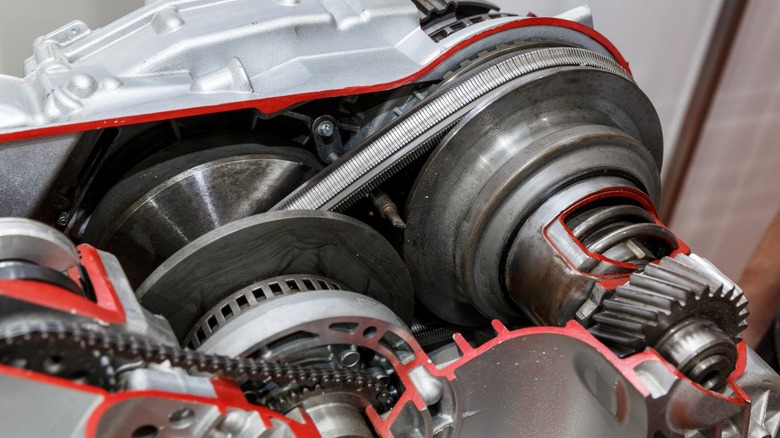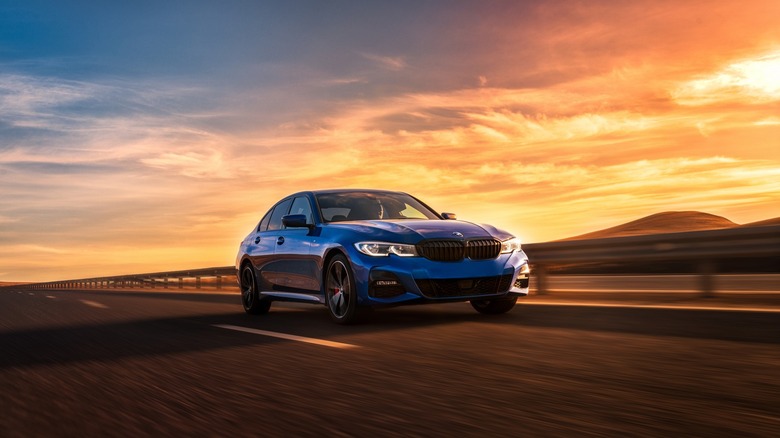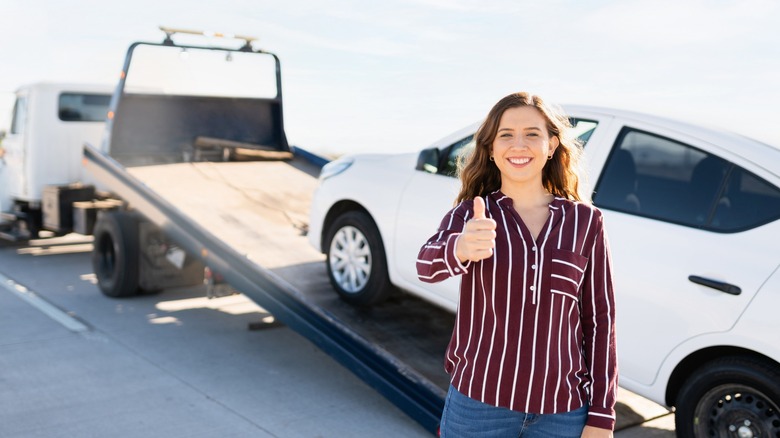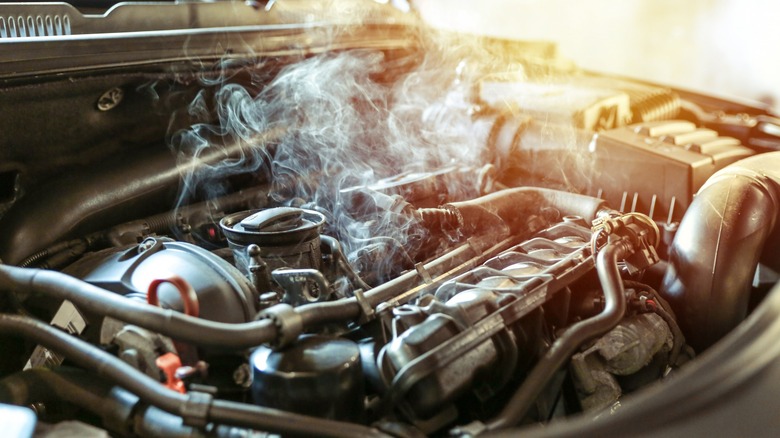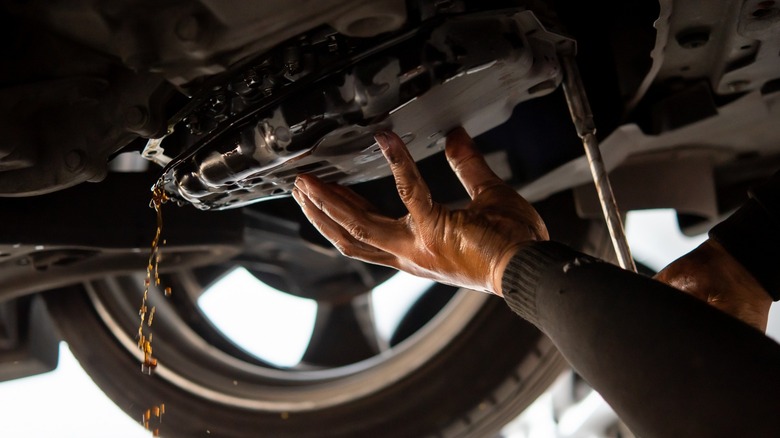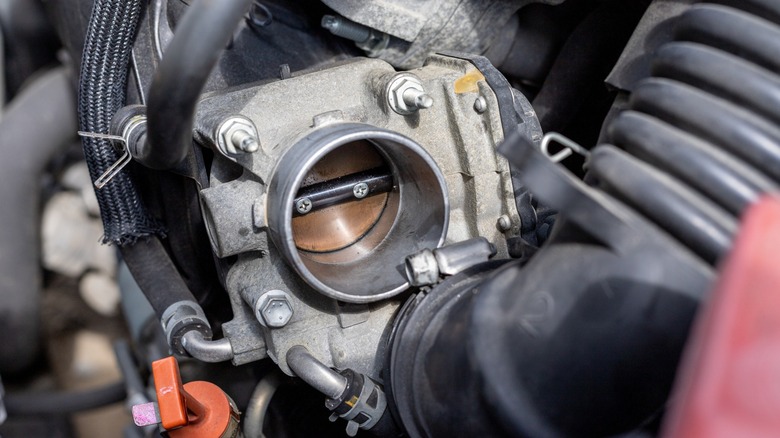5 Bad Habits To Avoid For Extending The Life Of Your Car's CVT Transmission
It's about time drivers get over their hatred of continuously variable transmissions (CVTs). Sure, it's nice to feel that shift from one gear to the next, and we're sure there's some sort of Freudian reason why we love that sensation so much, but CVTs are just as serviceable as their automatic counterparts. In fact, sometimes even more so when considering some of the perks you get, like improved fuel economy.
If there is one thing to be wary about, CVTs tend to need a little more TLC. Unlike automatic transmissions, which shift between different gears as you increase speed, the components of a CVT (a belt and two pulleys) are under constant strain. The ride is smoother than an automatic and manual because the pulley system replaces the multi-gear system.
Unfortunately, since the load isn't shifted between parts, the CVT can wear down faster. With higher repair costs, you'll want to do everything you can to prolong the life of your variable transmission. Luckily for you and all CVT drivers on the road, some steps can be taken to help. It all starts with you treating it well. So, if you tend to do any of the following, it's time to stop.
Shifting gears while in motion
This is pretty much true with all transmissions, but it's worth mentioning here to prevent costly damage to your CVT. You should always bring the car to a complete stop before you shift from reverse or drive into park. There's really no leeway here, so don't get this confused with being able to shift from drive to reverse or vice-versa while moving at incredibly slow speeds.
When you shift your vehicle into park, you're engaging what's known as the parking pawl. It may not be something you've ever heard of, but the pawl has a very important role to play in keeping power from going to your wheels to keep you stationary. When you stop your car by shifting into park while moving, you can damage the pawl, and without it, power from your engine can actually reach the drive wheels while the vehicle is still running and cause them to start rolling.
If you want to prolong the life of your parking pawl, you should consider using the parking brake every time you park your vehicle. When parking on an incline, you should come to a complete stop, set your emergency brake, and then put your vehicle into park. This puts the strain on the e-brake and reduces wear on the pawl.
Don't flat tow your vehicle
Whether moving across the country or heading out on a family camping trip in your RV, you may need to tow your CVT vehicle behind you. This is perfectly fine as long as all four tires aren't on the road while it's being towed.
Known as flat towing, this method puts your wheels in motion throughout the duration of the trip. While this would be the case if you were driving your car normally, the problem stems from the vehicle's engine not running. Typically, when the vehicle is running, all the moving parts, including the drive or half shaft, are lubricated to prevent overheating and unnecessary wear. A vehicle that's being flat towed, though, isn't running and, therefore, isn't properly distributing lubrication to the necessary parts.
This wear and tear on the transmission can damage it, resulting in high repair costs. So, if you're going to tow your CVT, the best method is a bed that the entire vehicle can fit on. Some cars can be towed with two vehicles down, but this varies between models, so check with the manufacturer before towing this way. In general, though, you should never flat-tow a CVT car.
Shifting to neutral at a traffic light
This was a practice in older vehicles when they weren't quite smart enough to know when and when not to use fuel. However, a quick Google search showed that many are still engaging in this practice, which simply isn't necessary and can put undue stress on the driveline.
If you live in an area with very few and very quick stoplights, then maybe you can try to justify shifting to neutral to prevent having to be so heavy on the break. However, in modern vehicles, it's still completely unnecessary. With how quick lights are, lasting no more than a few minutes at a time, the fuel you could be saving is negligible. Compare that to the cost of having to repair your driveline or perform more frequent maintenance on your CVT, and you'll find that the numbers don't really support this age-old practice.
It's also possible you may try to drive while the car is in neutral. While this isn't necessarily bad, if you do shift while the engine is revved, you may cause your transmission to slip. Do that too often, and you can run into concerns.
Of course, this doesn't apply to longer waits, like if you know you'll be stationary for quite some time. In that case, put it in park and release the brake, or just turn the engine off.
Neglecting your transmission fluid
We get it. Out of sight, out of mind. However, you can't completely forget that your CVT's fluid needs servicing at regular intervals. A pro and con is that you don't have to worry about it often. On the one hand, it's a money-saver and keeps your car out of the shop. On the other, it makes it so much easier to forget when you don't have to think about it for about 30,000 to 60,000 miles.
Since a CVT's pulley system is constantly moving to keep up with speed intervals, it does require a bit more attention than your standard automatic. Transmission fluid is key to these smooth transitions between speed intervals, and if it's low, dirty, or simply old and less viscous, the fluid can't do what it's intended to. A poorly lubricated transmission will result in reduced performance while you're on the road and is destined for costly repairs.
Check with your manufacturer to determine the proper interval based on your driving habits. While some cars require 30,000-mile service, newer CVTs are actually pushing the envelope to 100,000.
Going hard on the throttle
When a car is running, it will eventually get hot. There's a lot happening under the hood that requires lubrication and coolants to prevent overheating. So, if the opportunity is there to prevent an unnecessary increase in heat, you should take it. This is especially true in both a dry and wet-clutch CVT.
If you tend to hit the throttle hard, it's time to stop. If your car has a dry-clutch CVT, it's not going to get the proper lubrication needed to counter the sudden and jarring acceleration. Though wet-clutch CVTs are lubricated, the lubrication tends to be thin and can still be inadequate to accommodate harsh driving conditions.
With a CVT, the best method is to throttle gently and steadily. Be firm but not heavy-footed, and apply progressive pressure until you're at the speed you want. There is also such a thing as throttling too gently, though. If you're too light on the throttle, the belt can slip on the pulley, causing heat build-up.
